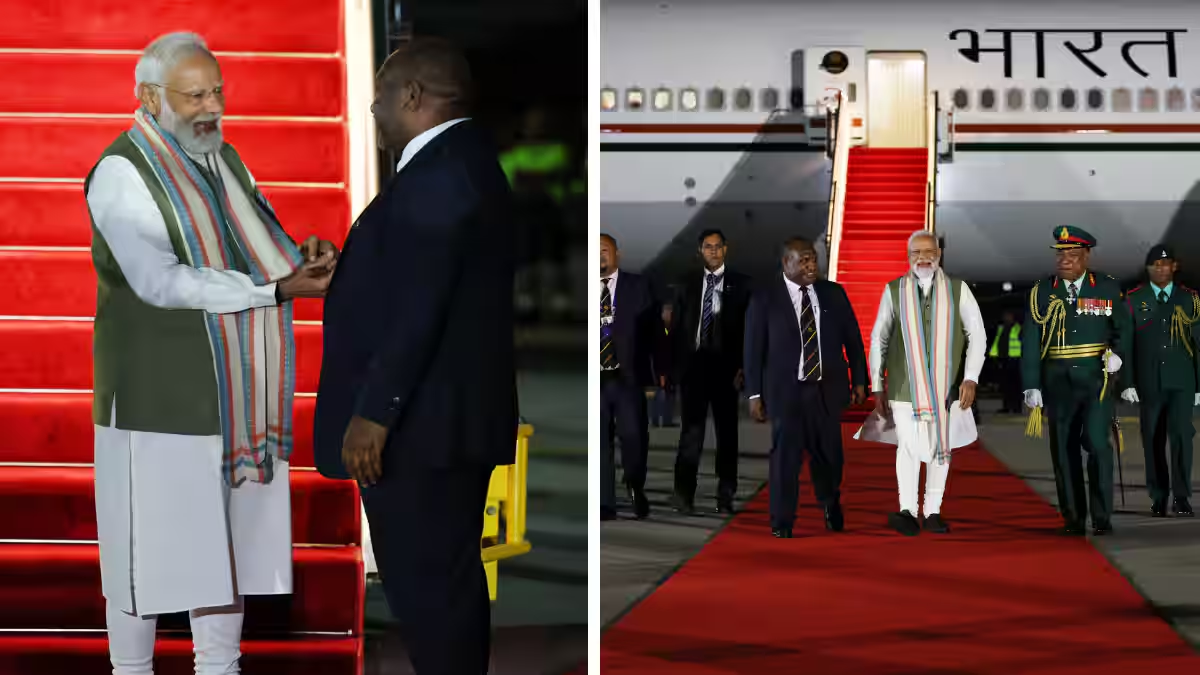Prime Minister Narendra
Modi is visiting Papua New Guinea. He is the first ever Indian prime minister
to visit Papua New Guinea. During his visit he will hold talks with Papua New
Guinea Governor General Sir Bob Dadae and Prime Minister James Marape.
Modi will also host the
third summit of the Forum for India-Pacific Islands Cooperation (FIPIC) on May
22. As India is attempting to increase its outreach to the Pacific Islands, the
region remains a fiercely contested entity between China and the West from
geopolitical and geoeconomic perspective.
By virtue of geography
and being a lesser focused region in its foreign policy, India has shaped its
interactions with the Pacific Islands accordingly.
Pacific
Islands as a Contested Space
Pacific Islands have been
for a long time considered as the United States’ (US) backyard and a region
where Australia has wielded hegemonic influence. However, China has been making
inroads in the region challenging the US and Australia. China’s engagements
with the Pacific Islands started in the economic domain.
China became a dialogue
partner of the Pacific Islands Forum in 1989. In 2006 China launched the
China-Pacific Island Countries Economic Development and Cooperation Forum. Under
Xi Jinping’s presidency China has accelerated its engagements with the region
with a number of Pacific Island Countries joining the Belt and Road Initiative.
Along with economic
engagements China has made incursions in the strategic domain as well seeking
cooperation with the Pacific Islands in the areas of policing, security, trade,
data network and cyber security. To counter China’s influence Papua New Guinea
recently announced that it will sign a security pact with the US. This pact
will enable the US’ troops to access the island nation’s port and airports.
However, amid the
geopolitical and geoeconomic competition, the region’s concerns, particularly
with regard to climate change, remain neglected.
India’s
Engagements with the Pacific Islands
India’s engagements with
the Pacific Islands have only been gaining momentum in the past one decade. It
took 33 years for India to reset its focus on the region when Modi became the
first Indian prime minister in 2014 to visit Fiji after Indira Gandhi’s visit
in 1981. Apart from addressing the gap in its foreign policy, India’s engagements
with Pacific Islands are also a part of manoeuvring through the Indo-Pacific
Region.
Following the reconnect
with the region, India established the FIPIC in 2014 along with 14 Pacific
Island Countries – Cook Islands, Fiji, Kiribati, Marshall Islands, Micronesia,
Nauru, Niue, Palau, Papua New Guinea, Samoa, Solomon Islands, Tonga, Tuvalu and
Vanuatu. The first summit of this grouping was held in Fiji in 2014 while the
second summit was held in Jaipur in 2015.
When the FIPIC was launched in 2014, India offered $1 million for
adapting climate change and clean energy. Along with the climate change
cooperation, India and FIPIC are engaged in several projects like marine
biology, research, collaboration on space technology, affordable healthcare and
education.
Apart from the FIPIC,
India also engages with the Pacific Islands through Pacific Small Islands
Developing States (PSIDS). In 2019, India offered $150 million line of credit
to the Pacific Island Countries to undertake solar, renewable energy and
climate related projects as per their requirements. India also offered an
additional $12 million to the member states of the PSIDS to implement high
impact developmental projects of their own choice.
India is also involved in
capacity building projects with the Pacific Islands through the Indian
Technical & Economic Cooperation (ITEC) Programme. India could further
extend the capacity building cooperation by providing training facilities to
the civil servants from the FIPIC member countries. It would enable these civil
servants to acquire skills to work in a complex and inter-dependent world.
Training civil servant would also imply that India is indirectly assisting
these countries to strengthen democratic institutions.
Engagements with the
Pacific Islands are concomitant to India’s advocacy of the Global South. India
has raised concerns that Pacific Islands feel isolated at international forums
such as the United Nations. India, as the current president of the G20 could
initiate the group’s engagements with the Pacific Islands. India could suggest
a separate track for these countries as it would offer the Pacific Islands an
opportunity to share their concerns and experiences at a major forum.
India’s relations with
the Pacific Islands are in a developing stage. However, India has projected and
positioned itself as a country that is willing to share the concerns of this
region and to provide assistance to address these concerns. India must build
upon the initiatives that it has started to engage with the Pacific Islands. India’s
approach towards the Pacific Islands is concomitant to India’s vision of the
Indo-Pacific Region which includes cooperation in the areas of climate change
and sustainable development.
Modi’s visit to Papua
Guinea is an important step towards enhancing India’s outreach in the region.
This visit must be followed up by frequent high-level engagements between India
and the Pacific Island Countries.



